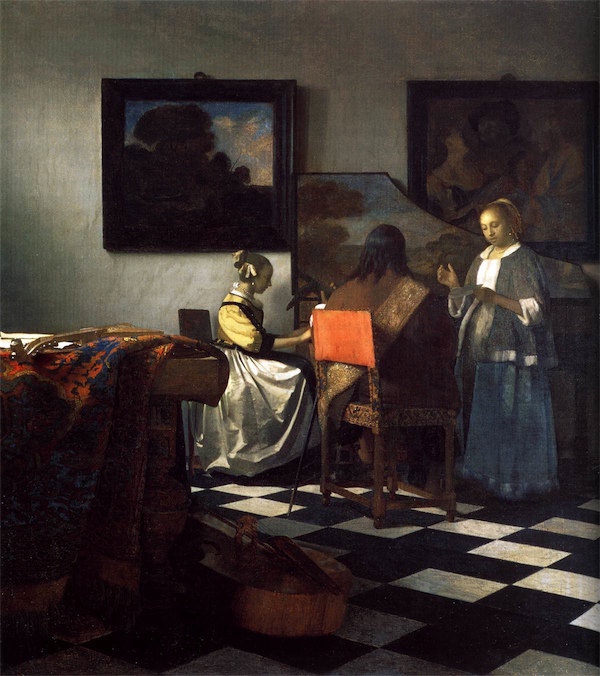
Jetzund kömpt die Nacht herbey,
Vieh und Menschen werden frey,
Die gewüntschte Ruh geht an;
Meine Sorge kömpt heran.
Schöne gläntzt der Mondenschein;
Vnd die Gülden Sternelein;
Froh ist alles weit vnd breit,
Ich nur bin in Trawrigkeit.
Zweene mangeln uberall
An der schönen Sternen Zahl;
Diese Sternen die ich mein’
Ist der Liebsten Augenschein.
Nach dem Monden frag’ ich nicht,
Tunckel ist der Sternen Liecht;
Weil sich von mir weggewendt
Asteris mein Firmament.
Wann sich aber neigt zu mir
Dieser meiner Sonnen Ziehr,
Acht’ ich es das beste seyn,
Daß kein Stern noch Monde schein.
And now the night descends,
Beast and man gain their freedom,
The rest they hope for has come;
But now my sorrow descends.
The moonlight shines beautifully;
And the tiny golden stars;
Everything is happy, far and wide;
Only I am trapped in sorrow.
Everywhere two are missing
In the count of beautiful stars;
These stars that I mean
Radiate from the eyes of my beloved.
I ask not for the stars,
Dark is their light,
Because she has turned her back on me,
Asteris, my firmament.
But when she shows her inclination to me,
She, the ornament of my suns,
Then I think it best
That neither star nor moon shines.
—Martin Opitz, Ode IV: Jetzund kömpt die Nacht herbey from Oden und Gesänge (1618)(S.H. transl.)
This is a relatively youthful and simple composition by the great Silesian Baroque poet Martin Opitz. Listen to Andreas Scholl sing Johann Nauwach’s setting of the poem taken from Teutsche Villanellen (1627), one of the pioneering works of the art song format north of the Alps. The art song was extremely well established at this time in Italy, and Nauwach, who studied music in Italy and was well versed in its forms appears here to be importing the continuo song which was well settled in the Italian north.
His settings of the Opitz odes were popular across middle Europe, and we have evidence of their performance in Delft at the time of Vermeer. They were designed to be sung with accompaniment on harpsichord, bass or lute, or a combination of these instruments. Hence, the Vermeer painting “The Concert” matches the performance that Nauwach envisions (note that one woman sits at the harpsichord, the man with his back to the artist holds a lute, and the standing woman holds and sings from a text, while a bass lies on the floor in the foreground–this is the specific casting of Jetzund kömpt die Nacht herbey). Was Vermeer portraying a performance of Nauwach’s Opitz Lieder? They stood at the core of the repertoire at this time, and the emotional timber they deftly use, light and darkness, love and sorrow, come close to the palette and technique of Vermeer.



